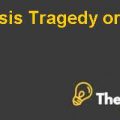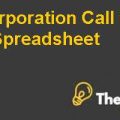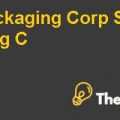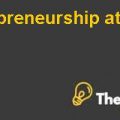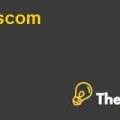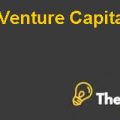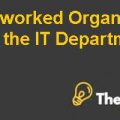In fusion Inc. Case Study Solution
CAPM
The Capital Asset Pricing Model (CAPM) is used to calculate the Cost of Equity (i.e. required return of shareholders) for the calculation of Weighted Average Cost of Capital (WACC). The model describes the relationship between the systematic risk and the expected return.
The investors want to be compensated for the risk they are subjected to, and the time value of money. Thus, the Risk free Rate in the calculation of CAPM accounts for the time value of money.
To calculate the CAPM, Risk free rate is 1.5% (one-year U.S Treasury rate). It is better to calculate CAPM through one-year U.S treasury rate rather than three or ten-year U.S treasury rate, as the long-term treasury rate is subjected to uncertainties. Calculation CAPM through long-term risk free rate will increase the volatility and uncertainty as the government rates may fluctuate over the ten-year time period.
The market rate of return for the calculation of CAPM is 5%. It is taken on general basis. It is assumed that the market return will be 5%
The Beta coefficient in the CAPM calculation measures the volatility or the systematic risk of an individual stock in comparison to the unsystematic risk of the market. It indicates the level of risk added to the diversified portfolio of an investor. Thus the beta of the In Fusion Inc. is taken as 2.6. It is the assumption that beta of In Fusion Inc. is 2.6 in relation to the two market comparables given in the case.
20% Hurdle Rate:
In Fusion Inc. current hurdle rate is 20%, which is the required return of its investors. The Capital Ventures require a return of 50%. As far as the return of the investors on the projected investment is concerned; the 20% hurdle rate is way too much as it ended up in the negative net present value of the projects.
The required return of the shareholders is 11% (refer to CAPM calculation), which explains that the shareholders need the return of 11%. The addition of return of debt holders will exactly demonstrate the total required return.
The hurdle rate of 15% or less than 20% may result in the positive net present value of the company, which will make it easier for the company to decide whether to invest in this project or not.
$4 Million Loan
The company is supposed to take a loan of $4 million if it invests in the expansion of the business. The NPV of the project is negative, but as far as the loan is concerned; the company should be able to generate sufficient cash flows to pay off the loan amount with in the given time period.
The financial information is required to assess the security of loan by In Fusion Inc. The data required for the calculation of loan security is as follows:
- Long term debt of the company.
- Interest rates.
- Debt ratio of the company.
The above data will explain that the company is financially viable, and is able to pay off the loan payments on time, to take a loan of $4 Million or not. The availability of above mentioned data will make it easier for the company to assess the fund raising from loan.
Comparable companies
The data given for the two companies are comparable enough as the price-to-earnings ratios and stock market volatility of both the companies are not much differentiated. However there is a significant difference between the financial position of both the companies in terms of sales, and total asset of the companies. Also the debt position of both the companies are entirely opposite. Still if the comparison is on market basis, then both the companies comparable.
Conclusion:
Based on the analysis of the company’s value;it has been concluded that the investment of the organization based on the both of the scenarios given,is estimated to determine which project investment will be feasible for the organization. Thereby, the NPV through the use of DCF valuation method demonstrate negative values of 18M in both the scenarios as well as the 4M investment of the second scenario. While the investment of first scenario demonstrates positive NPV demonstrating the potential of the organization to generate profit in future. Therefore, the firm can improve its sales growth rate.
Appendices
Appendix A–CAPM Calculation
| CAPM Calculation | |
| Risk free rate of return | 1.5% |
| Market return | 5% |
| Market return-Risk free rate of return | 4% |
| Beta | 2.6 |
| Cost of equity | 11% |
Appendix B – IN-fusion, Inc., Future Cash Flow Projections (in millions of dollars)
| Scenario I (Pancreatic Cancer Only) | ||||||
| 1 | 2 | 3 | 4 | 5 | 6 | |
| Sales | $0,76 | $0,83 | $0,110 | $0,129 | $0,143 | $0,159 |
| Cost of goods sold | 53 | 58 | 77 | 90 | 100 | 111 |
| Gross profit | 23 | 25.0 | 33 | 39 | 43 | 48 |
| Sales, general, & administrative | 16 | 18 | 23 | 27 | 30 | 33 |
| Earnings before interest & taxes | 7 | 8 | 10 | 12 | 13 | 14 |
| Taxes at 35% | 2 | 3 | 4 | 4 | 5 | 5.0 |
| Earnings after taxes | 4 | 5 | 6 | 8 | 8. | 9 |
| Depreciation | 1 | 2.0 | 3.0 | 3 | 4. | 4 |
| Capital expenditures | 1.0 | 2 | 2.0 | 2.0 | 2.0 | 3.0 |
| Increase net working capital | 51 | 51 | 3 | 2.0 | 20 | 20 |
| Free cash flow-Operations | $-0,1 | $0,0 | $0,5 | $0,7 | $0,8 | $8.0 |
| PV of FCF (20% discount rate) | -0.500 | 0.208 | 2.836 | 3.279 | 3.175 | 3.215 |
| Total PV of FCF | 12.213 | |||||
Appendix C – IN-fusion, Inc., Future Cash Flow Projections (in millions of dollars)
| Scenario II (Current Therapy plus Liver Cancer) | ||||||
| 1 | 2 | 3 | 4 | 5 | 6 | |
| Sales | $0,76 | 83 | 110 | 150 | 185 | $0,215 |
| Cost of goods sold | 53 | 58 | 77 | 105 | 130 | 151 |
| Gross profit | 23 | 25.0 | 33 | 45 | 56 | 65 |
| Sales, general, & administrative | 16 | 18 | 23 | 32 | 39 | 451 |
| Earnings before interest & taxes | 7 | 8 | 10 | 14 | 17 | 19 |
| Taxes | 2 | 3 | 4 | 5 | 6 | 7 |
| Earnings after taxes | 4 | 5 | 6 | 9 | 11 | 13 |
| Depreciation | 1 | 2.0 | 3.0 | 5 | 5 | 5.0 |
| Capital expenditures | 1 | 2 | 20.0 | 1.0 | 1.0 | 3.0 |
| Increase net working capital | 5 | 5 | 3 | 3 | 3 | 3.0 |
| Free cash flow-Operations | $-0,1 | $0,0 | $-0,13 | $0,10 | $0,11 | $0,12 |
| PV of FCF (20% discount rate) | -0.500 | 0.208 | -7.581 | 4.630 | 4.541 | 4.662 |
| Total PV of FCF | $0,6 | |||||
This is just a sample partical work. Please place the order on the website to get your own originally done case solution.
How We Work?
Just email us your case materials and instructions to order@thecasesolutions.com and confirm your order by making the payment here

